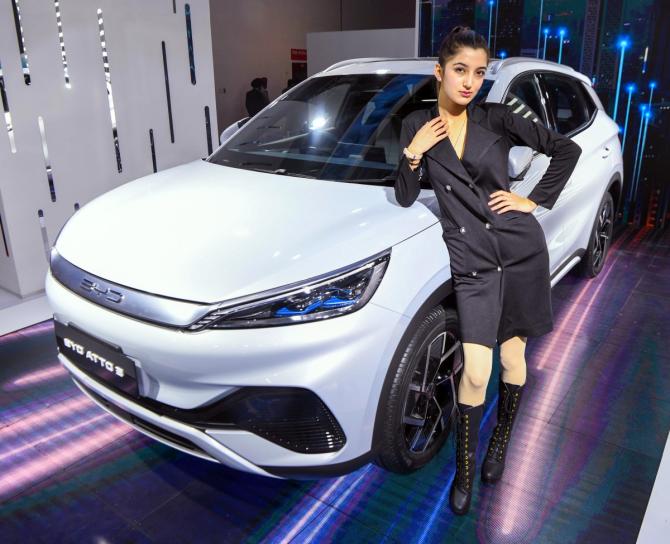In an era of EVS has Auto Expo run out of gas?

This year’s edition, three years lost to the pandemic and scheduling, wore a distinctive shade of green, and, as would befit an era of technology shift from internal combustion engines to electric motors, had a clutch of high-technology exhibits and concepts.
But the excitement of the expo’s heyday was missing.
Back in 2010, notwithstanding the global financial crisis overhang, Pragati Maidan saw massive footfall between January 10 and 17 for the 10th edition of the Auto Expo.
Spread across 125,000 square metres, its 2,100 exhibitors and 1.8 million visitors packed cheek-by-jowl.
The numbers breached the 2008 edition, which had been buoyed by the launch of Tata Motors’ promised Rs 1 lakh people’s car, the Nano.
This year’s edition, three years lost to the pandemic and scheduling, wore a distinctive shade of green, and, as would befit an era of technology shift from internal combustion engines to electric motors, had a clutch of high-technology exhibits and concepts.
But the excitement of the expo’s heyday was missing.
The number of exhibitors just about scraped past the 700-mark, a third of 2010’s number.
In 2020, the last expo before the pandemic, organisers had initially planned to defer the show to 2021 in the wake of sluggish demand during 2019-2020.
They didn’t, but despite the wavering, the show drew more than 1,500 exhibitors.
The absentees this year included automotive makers — original equipment manufacturers, or OEMs, in industry jargon — such as Honda, Mahindra & Mahindra, Mercedes-Benz, BMW, Audi, Skoda Auto, and Volkswagen.
OEMs skipping the Auto Expo isn’t new, but those are some marquee names.
As expected, in this era of the pressing need to save the environment, electric vehicles (EVs) hogged the lion’s share of headlines this year.
Tata, Maruti, Hyundai, Kia, MG, and BYD made landmark forays into the EV segment.
MG Motor’s exhibition pavilion in Hall 15 presented a greenscape with miniature windmills, rugged and rocky terrains, curated treelines, and grassy patches.
Nestled amidst the treelines were holograms of small birds flitting from branch to branch. Drones were a common sight.
Maruti, Hyundai, and MG Motor held parallel launches in the metaverse and presented ‘digital twins’ of their Auto Expo floors.
Also present at Hyundai’s hall was an augmented-reality model of electric-driven cityscapes.
Start-ups and small businesses occupied pride of place.
Several showcased their innovation in exterior designs, vehicle-to-load set-ups, charging stations and more.
Godawari Electric Motors unveiled EVs made of impact-resistant material, ostensibly unbreakable.
Repos Energy brought out its bio EV charger, which can generate power from waste.
A few start-ups showcased their technology under the umbrella of bigger brands – Maruti, MG, and Kia had allocated zones to tech start-ups.
But not all large OEMs had time for start-ups, more so because the new venue for the expo in Greater Noida, in the eyes of some, did not match up to the sprawl of Pragati Maidan.
“We are at a venue almost half the size of Pragati Maidan. Moreover, we have been asked to share space with start-ups who often take up as much space as a couple of car exhibits,” an executive from a leading automotive manufacturer told Business Standard. “Perhaps the organisers can think of a separate space for start-ups and innovators in the next edition,” he added.
In the two-wheeler segment, brands known for their EVs, such as Ola Electric, Okinawa Scooters, Hero Electric, and Ather Energy, skipped the expo, alluding to the high cost of participation, declining media interest, and low customer excitement.
Instead, the floor appeared crowded with business-to-business start-ups showcasing their electric rickshaws and bikes designed for e-commerce deliveries.
Among those who did participate, Ultraviolette Automotive and its e-bike concept, the F99, Liger Mobility’s self-balancing scooter, and Ampere’s NXG concept stood out.
Feature Presentation: Rajesh Alva/Rediff.com
Source: Read Full Article


